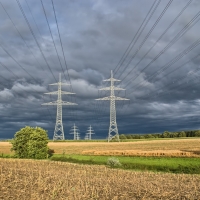How Emerging Technologies Can Revolutionize Utility Service Delivery

Do you know that people in Rome are still drinking water from aqueduct systems that were engineered and built thousands of years ago? Water delivery systems in many part of the United States haven’t changed much in the past few hundred years, as the folks in eastern Massachusetts found out a few years ago, when a break at the juncture of a major main put the drinking water of two million people at risk.
People have been so focused on the Internet that they have forgotten that we are still heavily dependent on an older, more fragile underlying infrastructure of water, gas, and electric utilities. Can emerging information technologies such as big data, the Internet of Things (IoT), and Machine to Machine (MTM) be applied to modernize utilities and other traditional industries?
At their hearts, the IoT and MTM are both ways of capturing and digesting vast amounts of information from a variety of sensors and other data sources, and using it to improve the efficiency of delivering services and managing infrastructure. Imagine being able to pull data from thousands of sensors looking for usage patterns that can be used to balance the power grid to prevent the large scale blackouts caused by cascading power distribution failures?
The US power grid is long overdue for a major overhaul as the increasingly fragile and aging infrastructure has not kept up with growing demand. IoT and MTM technologies promise to be the ideal way to modernize the management and delivery of our vital utility services. And that revolution has already started.
When was the last time you saw a water or gas meter reader? In many places, they have long been replaced with sensors read by drive-by trucks. Wouldn’t it be even more efficient to tie these meters to the Internet by piggybacking on existing residential broadband services?
In rural areas, the opportunity exists to gather usage information over satellite Internet, much like how an airplane engines' mechanical health can be tracked. Based on the tragic, expensive, and so far fruitless search for the lost Malaysian airplane, it is likely that aviation regulators worldwide will soon require airplanes to carry better black boxes—which are actually orange—with automated tracking sensors.
Of course new technology always brings its own risks. Using MTM enables utility companies to more closely monitor their systems, but it also leaves these same systems open to being hacked if the technology is not secured properly.
We can all benefit from being able to use our limited energy and water resources more efficiently and cost effectively. Next time you flip that light switch or boil tap water on your gas stove, think about how information gathered from huge grids of thousands or millions of data points will be used to revolutionize the delivery of utility services.

